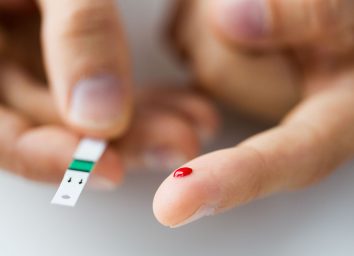Eating Habits to Avoid If You're Pre-Diabetic, Says Dietitian
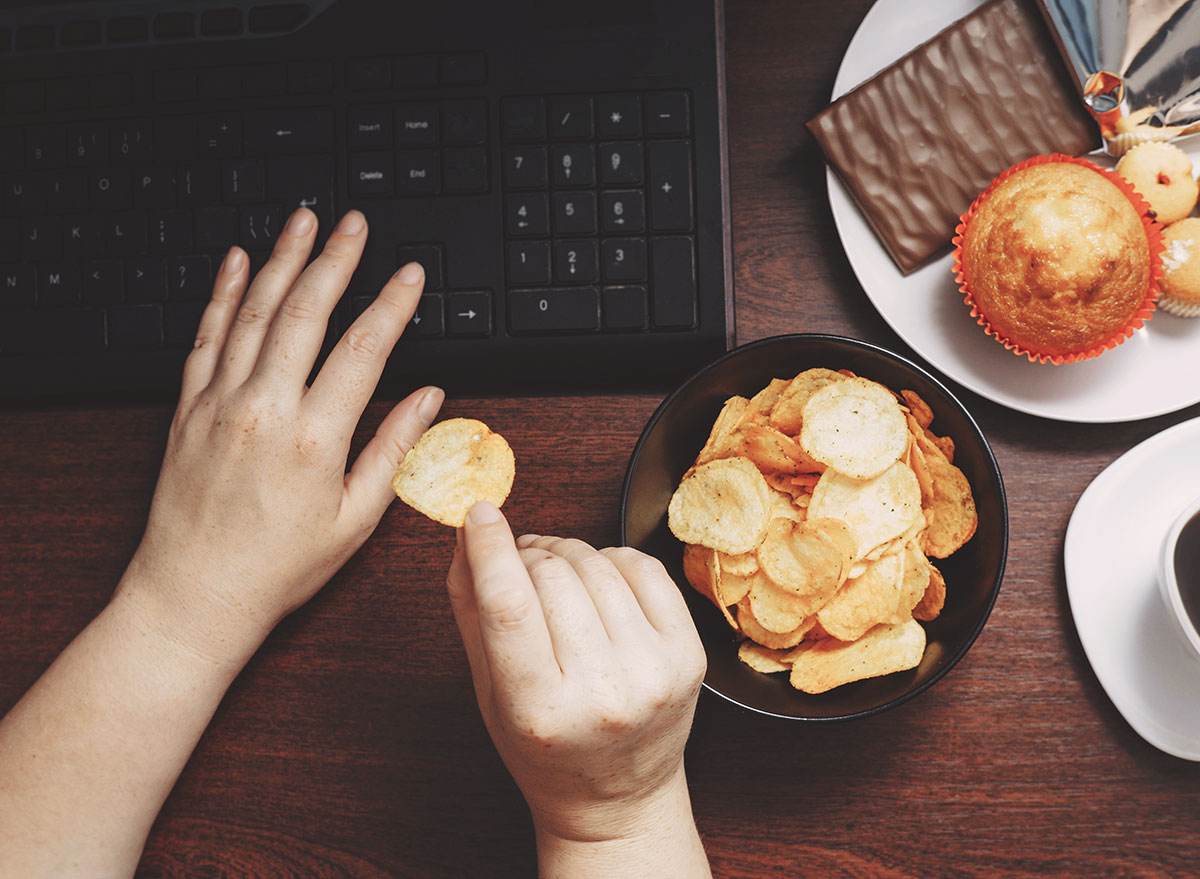
Upwards of 30% of Americans are considered pre-diabetic, and most of them don't even know it.
Prediabetes occurs when blood sugar is elevated, but not high enough to be diagnosed with type 2 diabetes. Blood sugars can hang out in the prediabetes range for years before being detected. You can assess your risk through the American Diabetes Association Risk Test.
However, managing prediabetes is possible with lifestyle changes. Improving our diet, exercise, and stress levels all contribute to better blood sugars and can prevent type 2 diabetes. In fact, research from the CDC's Diabetes Prevention Program has shown that lifestyle changes can prevent or delay diabetes for up to 10 years!
So, what are the habits to kick to manage prediabetes? Here's what is recommended, and for even more healthy eating tips, be sure to read up on our list of The 7 Healthiest Foods to Eat Right Now.
Stop skipping meals.
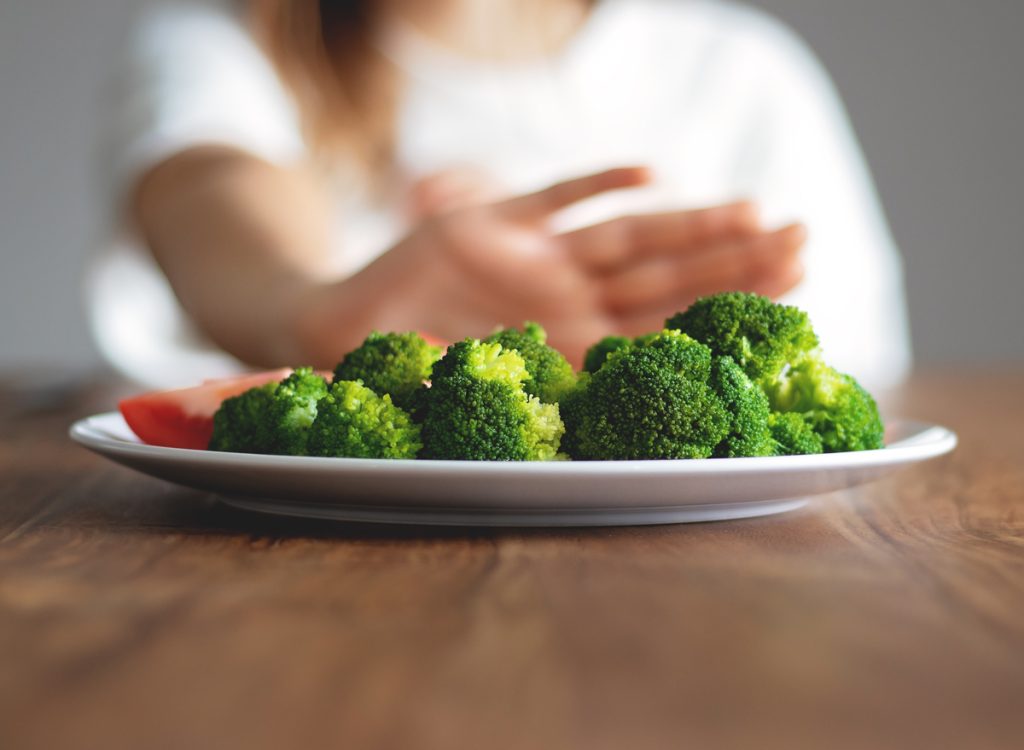
Eating less often may sound like the right solution to lower blood sugar, but it can actually cause greater swings in blood sugar management. Skipping meals often contributes to increased hunger later and makes it challenging to exercise portion control. Shoot for balanced meals every 4 to 5 hours to keep blood sugars steady and prevent low blood sugars.
Kick the soda habit.

Regular sodas have upward of nine teaspoons of sugar. Even more concerning, sweet drinks lack fiber or protein to slow down the absorption of those added sugars. If you love regular soda, consider switching to diet as a starting place to wean yourself off the sweet beverages.
Other drinks like tea, sparkling water, coffee, or zero-calorie drinks are also fun alternatives to mix up your beverage game.
These are the 112 Most Popular Sodas Ranked by How Toxic They Are.
Get rid of grazing behaviors.
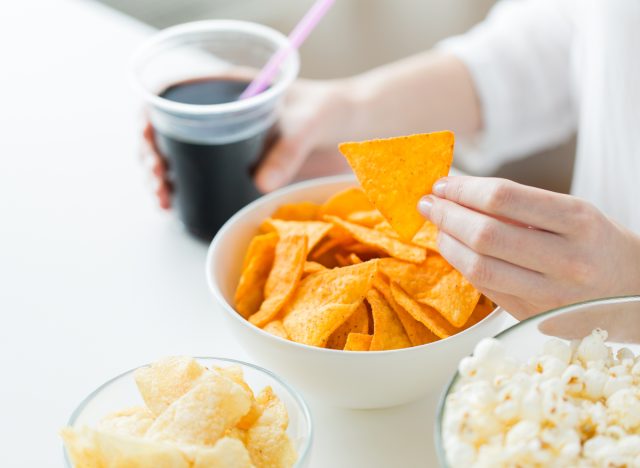
Grazing or snacking frequently throughout the day is a surefire way to make blood sugars spike throughout the day. Typically, grazing produces more frequent spikes in blood sugars that increase over the course of the day.
Instead of grazing, choose one balanced snack that has a protein and a carb option together. Easy options may be an apple and peanut butter, whole-grain crackers and cheese, Greek yogurt and fruit, or nuts and dark chocolate.
Stop sitting after eating.

Watching TV after eating might be normalized, but it can contribute to higher blood sugar levels after a meal. Instead, take a small walk after your largest meal to bring blood sugars down faster. Even 10 minutes of activity can make a significant difference!
Instead, opt for more balanced meals.
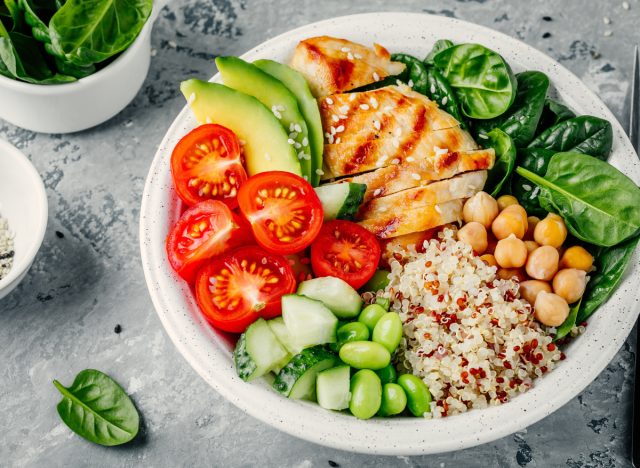
It's not only what we eat that impacts our blood sugar, but also what combinations of foods we choose. For example, a high-carb meal alone is sure to spike glucose levels. Yet, choosing a carb and pairing it with protein, healthy fat, and vegetables will result in a totally different blood sugar response.
Opt for balance whenever possible by focusing on a balanced plate. Emphasize lean protein, a non-starchy vegetable, healthy fat, and a portion-sized carb to get optimal balance at each meal!
For even more diabetes tips, read these next:

